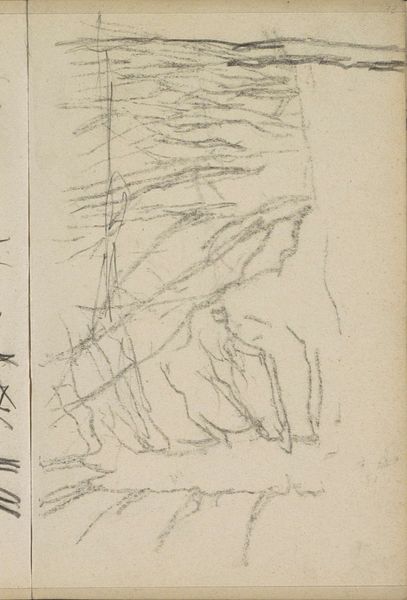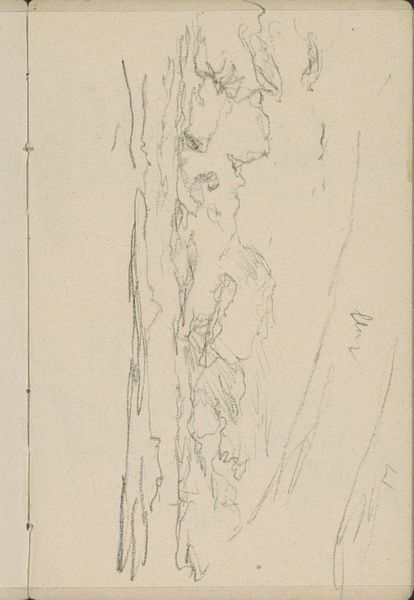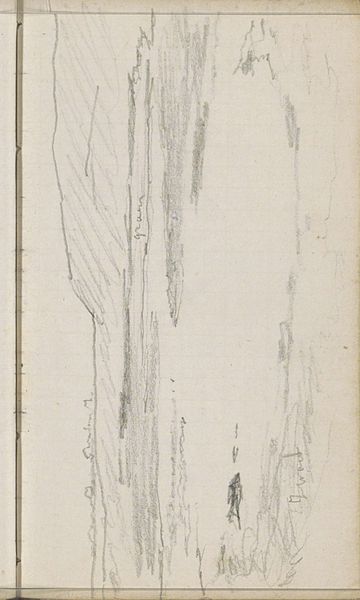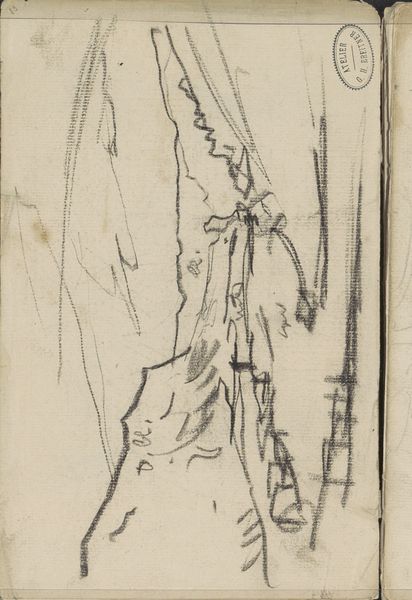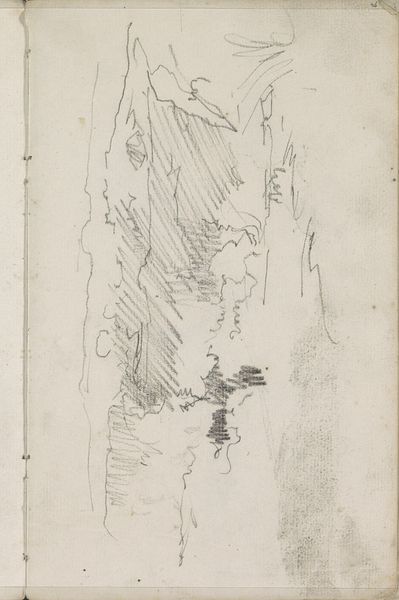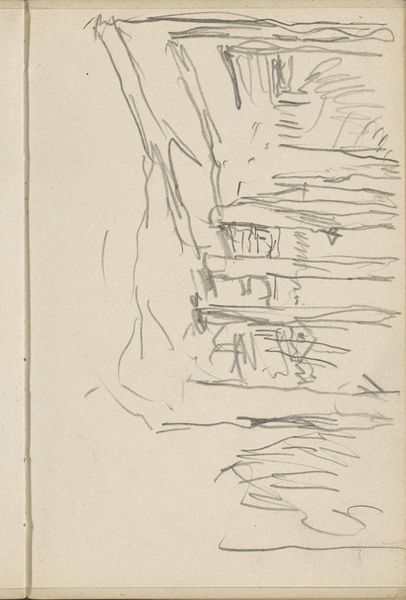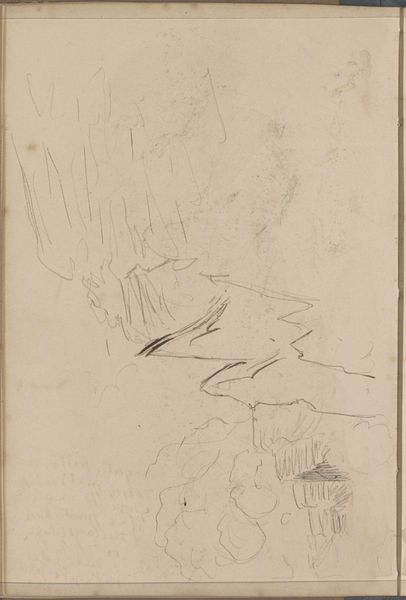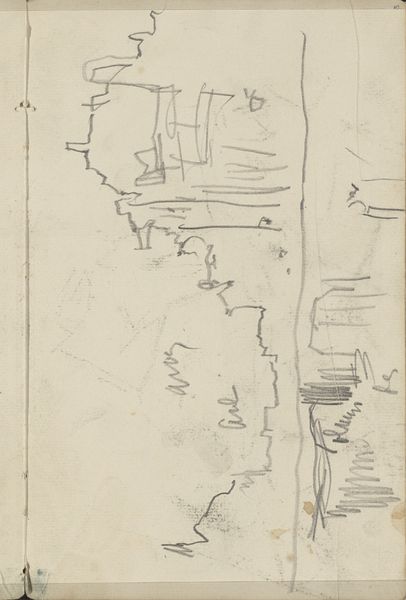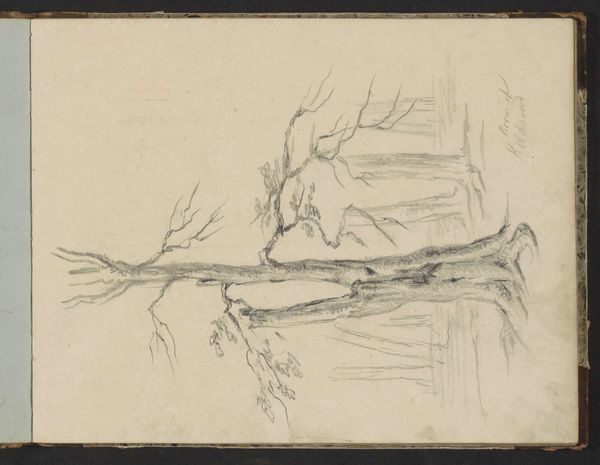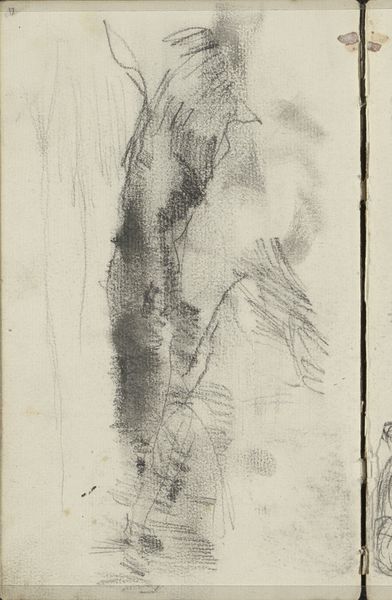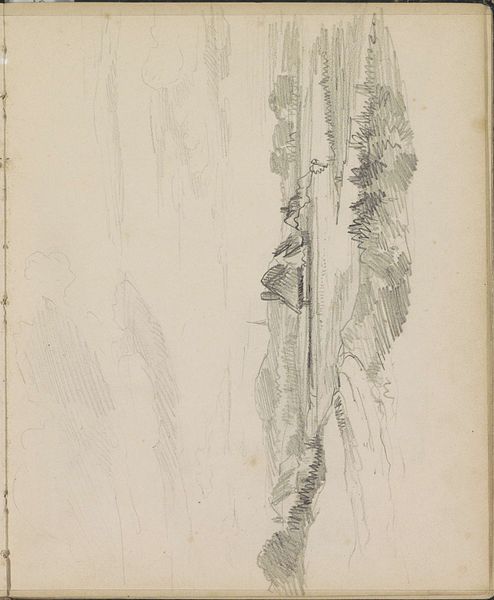
Copyright: Rijks Museum: Open Domain
Editor: So, this sketch is called "Landschap, mogelijk een duinlandschap" – that's "Landscape, possibly a dune landscape." It's attributed to George Hendrik Breitner, and was likely created sometime between 1886 and 1923. The materials are listed as graphite and paper. It's fascinating how few lines Breitner uses. It feels very raw, almost like a fleeting thought captured on paper. What do you make of it? Curator: What strikes me is the context of sketchbook drawings like this one. These weren't meant for public consumption, unlike finished paintings displayed in galleries. This offers an intimate glimpse into Breitner’s artistic process, before any possible institutional influence came into play. Consider how museums often frame art as a finished, polished product. Editor: That makes sense. It definitely feels unpolished, almost urgent. Curator: Exactly! Think about the societal pressure on artists in that era. Art academies had very specific ideas of what was “good” or “worthy” of display. Sketches like this, existing outside that system, provided a space for free experimentation. How might the "finished" Breitner, exhibited in prominent venues, contrast with the artist we see here, working freely in his sketchbook? Editor: I hadn’t considered that pressure. So, this is Breitner working for himself, before concerns of how his art would be received publicly? Curator: Precisely. This small, private sketch bypasses those concerns entirely. Does viewing it through this lens change your interpretation at all? Editor: Definitely! Knowing it's from a sketchbook makes me appreciate the directness and immediacy of the work even more. I’d like to see it hanging next to one of his official landscapes at the Rijksmuseum! Curator: A very important takeaway: recognizing the socio-political context of artmaking allows us to have a broader perspective on the final work and other preliminary or experimental material which might come before it. Thanks, this was really clarifying.
Comments
No comments
Be the first to comment and join the conversation on the ultimate creative platform.
